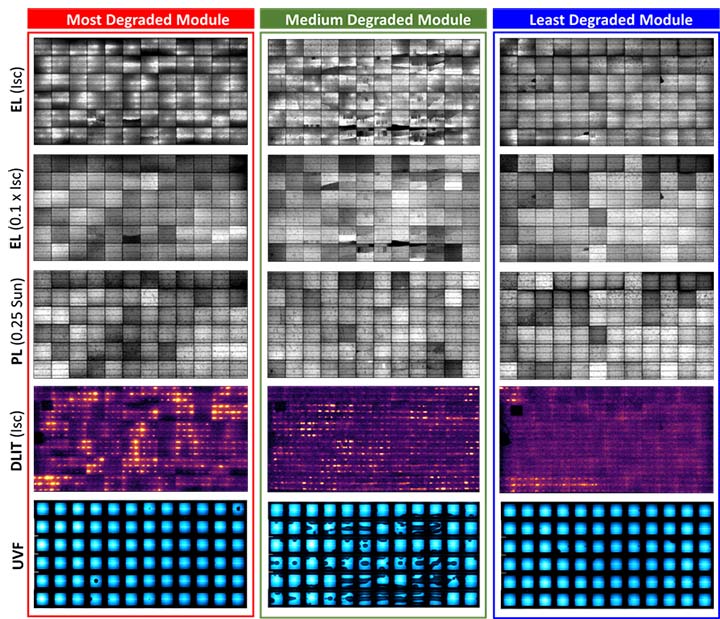Photovoltaic Module Luminescence and Thermal Imaging
DuraMAT's luminescence and thermal imaging capabilities provide pictorial and often intuitive understanding of photovoltaic (PV) module degradation mechanisms.
We can combine several different combinations of module excitation (electrical and optical) and emitted photon detection, resulting in spatially resolved imaging of injection-dependent electroluminescence, contactless electroluminescence, photoluminescence, UV-fluorescence, and lock-in thermography.
Core Objective
Location
National Renewable Energy Laboratory (NREL)
Applications
The most informative imaging combinations will depend on the type of degradation affecting the module. For example, we are able to create series resistance maps by combining high-injection and low-injection electroluminescence images. Photoluminescence is useful to highlight variations in material quality without dependence on electrical contact. UV fluorescence results from changes in encapsulant chemistry, and it can be a quick method to locate cracks. Lock-in thermography can be useful to identify causes of module heating, such as current crowding, joule heating, defects causing high recombination, and shunting. Comparison of all available images can help to distinguish between various possible degradation modes.
Availability
This capability is available to NREL and external collaborators.
References
Sulas-Kern, D.B.; Johnston, S.; Meydbray, J. “Fill Factor Loss in Fielded Photovoltaic
Modules Due to Metallization Failures, Characterized by Luminescence and Thermal Imaging” in
46th IEEE Photovoltaic Specialist Conference (PVSC), Chicago, 2019.
Sulas, D.B.; Johnston, S.; Jordan, D.C. “Comparison of Photovoltaic Module Luminescence
Imaging Techniques: Assessing the Influence of Lateral Currents in High-Efficiency
Device Structures” Solar Energy Materials and Solar Cells 2019, 192, 81-87.
Sulas, D.B.; Johnston, S.; Jordan, D.C. “Imaging Lateral Drift Kinetics to Understand
Causes of Outdoor Degradation in Silicon Heterojunction Photovoltaic Modules” Solar
RRL 2019, 1900102.
Contact
To learn more about this project, contact Dana Sulas-Kern or Steve Johnston.
